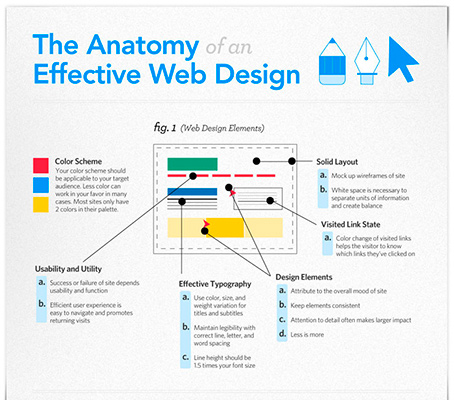Basic Facets Of Website Design: Guidelines For Establishing A User-Centric Site
Basic Facets Of Website Design: Guidelines For Establishing A User-Centric Site
Blog Article
Team Writer-McKnight Daugaard
When it pertains to internet site style, making certain user-friendliness is essential. From receptive design to streamlined navigating, every component plays an essential duty in producing a site that accommodates your audience's demands. However what concerning the finer details that can make or damage a customer's browsing experience? Keep tuned as we uncover some often-overlooked tips that can boost your web site's usability to the next degree, making it genuinely stick out in the digital landscape.
Relevance of Responsive Style
Responsive layout is a critical element of modern-day internet site growth. Guaranteeing your website is responsive methods that it can adapt to various screen dimensions and tools, supplying a seamless experience for individuals.
With the enhancing use of mobile phones and tablet computers to access the web, having a receptive style is vital for reaching a wider audience. It helps in improving customer experience by making your web site simple to browse and read on any kind of device.
Furthermore, responsive style can favorably affect your online search engine positions, as online search engine like Google prioritize mobile-friendly websites. By having a responsive design, you're also future-proofing your site, as brand-new devices with differing screen dimensions continue to arise.
Simplify Navigating Structure
To improve individual experience and help with simple accessibility to details on your internet site, enhancing the navigation structure is critical. When developing your site, focus on producing a clear and intuitive navigation menu that assists site visitors find what they're searching for rapidly.
Limitation the variety of menu items to the fundamentals, organizing relevant pages with each other to prevent overwhelming customers. Use descriptive tags that clearly show the web content of each web page, making it much easier for customers to recognize where each web link will certainly take them.
Consider applying dropdown menus for subcategories to avoid jumbling the main navigating bar. Additionally, include best managed hosting on the page for individuals who like looking for particular info.
Focus on mobile responsiveness in your navigating design to make sure very easy accessibility on all devices.
Optimize Page Load Speed
Improving page tons speed is critical for keeping visitors on your internet site. Slow-loading web pages irritate individuals and can result in high bounce prices. To optimize web page tons speed, begin by enhancing images. Compress images without compromising high quality to decrease their documents dimensions.
Additionally, enable web browser caching to keep frequently accessed resources in your area, speeding up tons times for returning visitors. Minify CSS, JavaScript, and HTML files by getting rid of unneeded characters, comments, and formatting, enhancing tons rate.
Take into consideration utilizing a content shipment network (CDN) to disperse your internet site's content across multiple servers worldwide, lowering latency for customers accessing your site from various places. Lastly, restrict making use of third-party scripts and plugins, as they can considerably influence load times.
Final thought
To conclude, by incorporating receptive layout, simplifying navigation, and maximizing web page load speed, you can develop a straightforward internet site that appeals to a wider target market and improves user experience. business website content make certain that visitors can quickly accessibility and navigate your site across various tools, resulting in raised involvement and contentment. By concentrating on these essential elements, you can build a successful web site that keeps customers returning for more.
